Mon 13 Mar 2006
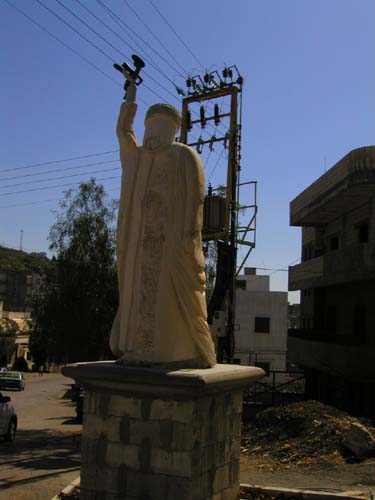
Yesterday we rented a car and attempted to drive into South Lebanon, the former “Security Zone” occupied by Israel until May 2000. The borders are still maintained, and officially, foreigners need some sort of special permit to visit. Ethan and I have been there twice without such a permit, though the first time was over 3 years ago and the second time we accompanied a resident of a village in the region. We decided to just turn up and try to visit without one.
It didn’t work out, and we were apologetically turned away at 2 different checkpoints. We were traveling with a friend who happens to be a journalist with a lot of Iraq stamps in his passport. I thought he might be turned away because of this (Hezbollah doesn’t appreciate uninvited foreign journalists running around in the areas they defend/occupy) but we didn’t even make it that far in the process.
We were disappointed, as it’s a very interesting area with several unique sites, but the weather was exceptional and we were enjoying just driving around through the rolling hills looking at villages. We decided to take sort of a back way to Qana, another place we wanted to visit, but we got a bit turned around. We finally hit a dead end just above the Litani River. The road just ends, though you can see where the rest of it used to be. We realized that the road and bridge across the river were likely destroyed during Israel’s invasion or subsequent occupation of the area.
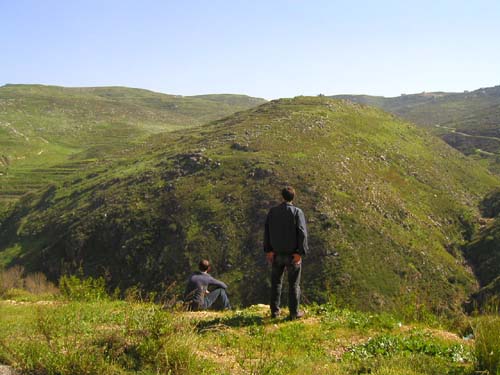
The end of the road.
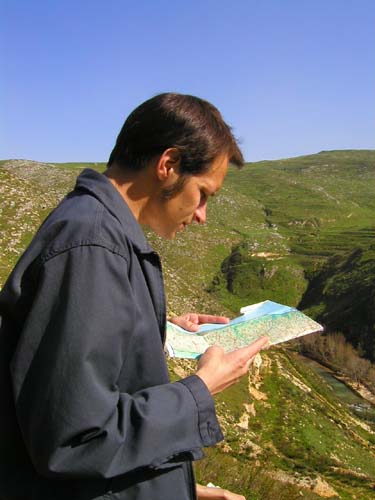
We are lost.
We turned around and asked for directions back to the coast in a village called Kfar Sir, and half the village got joyfully involved in helping us out. One guy drew all over our map and implored us to visit him the next time we are in town.
[Small tangent: Upon googling “Kfar Sir”, I learned that the village is known for its progressive composting methods. If you have been to Lebanon, you are probably well aware that it has major waste disposal issues. Just last week, a dump in Saida collapsed and sent debris as far north as Turkey. The leaders of Saida have declared a state of emergency now that all of that waste is being pushed back onto their shores. It’s probably not a good time to go swimming here.]
After having lunch in the Sur/Tyr port, we drove off toward Qana. We wanted to visit Qana because it is the site of a massacre – Israel bombed a UN camp there in 1996. Many locals had taken cover there from ongoing bombing, and over 100 Lebanese civilians were killed. We eventually found the former camp as the sun was setting. There are some memorials to those killed, including Fijian UN officers. This UNIFIL camp, now shut down with its ruins home to quite a few squatters, was a base for the Fijians posted in Lebanon. Qana is also one of the possible sites where Jesus turned water into wine.
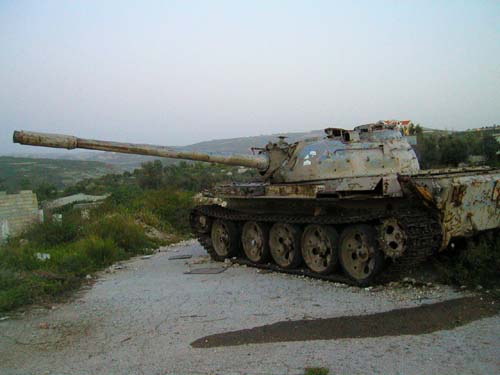
The guy who followed us around the site insisted that this is an Israeli tank, even though it is Russian made. It seems more likely that it is Syrian.
UPDATE: It makes a lot of sense, as someone commented, that this could be an SLA (South Lebanon Army) tank. So in a sense, the guy was correct in saying that it’s Israeli, since the SLA was more or less controlled by Israel.
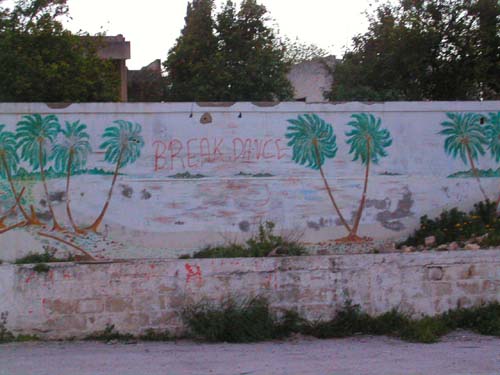
I found this mural rather poignant. It seems to have been left behind by the Fijian soldiers who painted it out of homesickness. Our “tour guide”, who followed us around the site vaguely explaining things, said that someone wrote “Breakdance” because the Fijians used to breakdance all of the time. I have no idea whether there is any truth in that.
March 13th, 2006 at 11:57 am
Neat trip! We need to get further down South than Tyr one of these days.
March 13th, 2006 at 3:51 pm
The SLA was given russian tanks that Israel had confiscated from Syria and Egypt in 1973 (along with a few it captured from palestinians and syrians in 1978 and 1982 in Lebanon), so this is most probably an SLA tank. Syrians were forbidden to go anywhere south of Al-Awali river (at the northern entrance of Saida) so there’s almost no chance this tank is syrian.
March 13th, 2006 at 8:39 pm
I’m walking away from this post with Breakdancing Fijians burned into the brain…forever.
September 15th, 2006 at 4:05 am
free gay porn movies
free gay male porn free gay porn videos